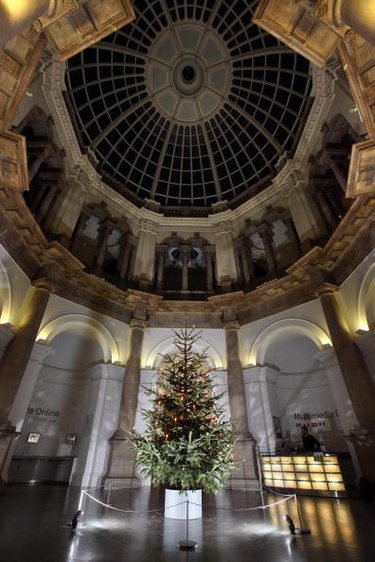
The theme of good fighting against evil, and vice versa, is regularly used in all branches of the arts. In order to describe the contrast between the two, painters use various symbols, including Christian figures, angels, devils and demons, and the result are several famous paintings that have made an impact on how we have perceived good and evil throughout history.
The Garden of Earthly Delights by Hieronymus Bosch
Video of the Day
Painted as a triptych, the famous painting by Dutch artist Hieronymus Bosch shows good and evil through depictions of the Garden of Eden in all its beauty on the left panel and the damnations of hell with all the gory details on the right panel. The middle panel shows colorful fruits, animals and structures in various fantastical shapes and several nude figures engaged in sexual activity. It has been interpreted as humankind's tendency to waste goodness by engaging in worldly pleasures that ultimately lead to evil and hell. Bosch painted the famous triptych between 1500 and 1505, and it can be seen in the Museo del Prado in Madrid.
Video of the Day
The Mystic Nativity by Sandro Botticelli
Like "The Garden of Earthly Delight," this painting is also divided into three parts, but this time horizontally. "The Mystic Nativity" depicts the birth of Christ in the middle, angels singing above him, and demons fleeing to hell below. The famous painting by Italian artist Sandro Botticelli was produced while the painter was under the influence of the dissident friar Savonarola who preached the nearing of the Apocalypse at the end of the 15th century. The curators of the National Gallery in London, where the painting is housed, assume that the painting depicts the second coming of Christ. This ultimately would result in the end of the world, the banishment of all evil and the opening of heaven to the good Christians.
The Good and Evil Angels by William Blake
William Blake's "The Good and Evil Angels" was painted between 1795 and 1805 as an annotation to the Christian mysticism works of the Swiss pastor and writer Johann Kasper Lavater. The famous painting pitches good versus evil by depicting two angels and a cherubic child. The evil angel is characterized by the hellfire he rises out of and the chains at his left ankle that keep him firmly attached to the ground. He tries to grab the child that is held by the good angel, painted with blond floating hair, rosy cheeks and the sun behind his back. The watercolor painting can be found in the Tate Gallery in London.
The Third of May 1808 by Francisco de Goya
Goya's most famous painting about the atrocities performed in the French-Spanish war in the beginning of the 19th century depicts good versus evil in the form of a Spanish civilian the moment he is killed by French soldiers. The good in the picture is personified by the unarmed Spaniard in his spotless white shirt, which stands out against the evils of war, symbolized by the bodies and the blood of other victims, the soldiers, the gunfire and the blackened sky. The oil painting is housed in the Museo del Prado in Madrid.